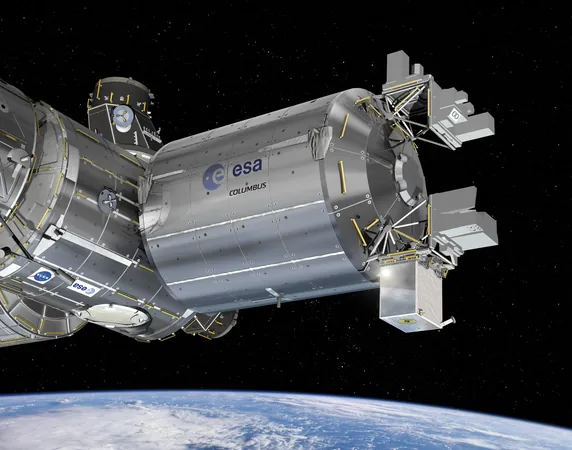
ESA Unveils the Future of Timekeeping with Revolutionary Atomic Clock on the ISS
2025-04-28
Author: Noah
ESA Launches the World's Most Advanced Atomic Clock
In a groundbreaking advancement for precision science, the European Space Agency (ESA) has successfully installed the most sophisticated atomic clock system ever developed aboard the International Space Station (ISS). This state-of-the-art facility, known as the Atomic Clock Ensemble in Space (ACES), was launched on April 21, 2025, aboard a SpaceX Falcon 9 rocket.
Precision Timing Takes Flight
Just four days later, on April 25, the Canadian robotic arm meticulously placed ACES on the Earth-facing side of ESA's Columbus laboratory. Designed to operate for two and a half years, ACES boasts the most accurate atomic clocks ever sent into orbit.
What Makes Atomic Clocks Exceptional?
An atomic clock is a remarkably precise device that relies on the vibrations of atoms, typically caesium or hydrogen, for timekeeping. Unlike traditional clocks that depend on mechanical components or quartz oscillations, atomic clocks use the stable frequency of atomic transitions. This groundbreaking approach allows them to maintain extraordinary accuracy, losing or gaining only a second over millions of years.
Revolutionizing Science and Technology
Atomic clocks play a crucial role in various fields, from GPS systems and deep space navigation to telecommunications and scientific experiments that test fundamental laws of physics. ACES will facilitate unparalleled time transmission capabilities by combining two cutting-edge timepieces: the PHARAO caesium fountain clock from France’s CNES and the Space Hydrogen Maser developed by Switzerland’s Safran Timing Technologies.
Connecting Clocks Across Space and Time
Through advanced microwave and laser links, ACES will establish a network of clocks between Earth and space. This network will empower scientists to delve deeper into the nature of time itself, evaluate predictions from Einstein’s theory of general relativity, and set the groundwork for redefining the second using next-generation optical clocks.
A Monumental Achievement for Science
"I’m thrilled and proud that our incredibly complex and significant project is now in space after years of hard work!" enthused Simon Weinberg, ACES Project Scientist at ESA. "This achievement marks a pivotal moment for ESA and the scientific community. I anticipate exciting breakthroughs stemming from our collaboration with Airbus, Timetech, CNES, Safran Time Technologies, and partners throughout Europe. ACES is truly ESA's ‘jewel in the crown’ aboard the ISS."
What’s Next for ACES?
Following its installation, ACES is set for its first activation today, April 28, 2025. Engineers will initiate communication with ground stations, stabilize thermal systems, and prepare ACES for full operational capacity.
A Revolutionary Journey Ahead
Over the upcoming six months, a thorough commissioning phase will test and calibrate this remarkable system, aiming for time comparison accuracies within a staggering 10 quintillionths of a second—ten to one hundred times more precise than current GPS technology.
With the commissioning phase complete, ACES will embark on a two-year scientific mission poised to unlock new horizons in fundamental physics and transform the landscape of time measurement.









 Brasil (PT)
Brasil (PT)
 Canada (EN)
Canada (EN)
 Chile (ES)
Chile (ES)
 Česko (CS)
Česko (CS)
 대한민국 (KO)
대한민국 (KO)
 España (ES)
España (ES)
 France (FR)
France (FR)
 Hong Kong (EN)
Hong Kong (EN)
 Italia (IT)
Italia (IT)
 日本 (JA)
日本 (JA)
 Magyarország (HU)
Magyarország (HU)
 Norge (NO)
Norge (NO)
 Polska (PL)
Polska (PL)
 Schweiz (DE)
Schweiz (DE)
 Singapore (EN)
Singapore (EN)
 Sverige (SV)
Sverige (SV)
 Suomi (FI)
Suomi (FI)
 Türkiye (TR)
Türkiye (TR)
 الإمارات العربية المتحدة (AR)
الإمارات العربية المتحدة (AR)